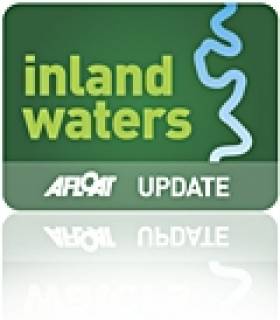Displaying items by tag: Ringsend Basin
Grand Canal City Dredging Works Completed
#GrandCanal - Waterways Ireland has issued notice that dredging works on the Dublin Main Line of the Grand Canal between Portobello and Inchicore have now been completed.
As previously reported on Afloat.ie, the works between Lock C7 at Portobello and Lock 2 at Davitt Road were instigated to keep the canal navigable for a large range of boats.
The dredging works involved the removal of sediment deposits from the central navigation channel and the clearance of rubbish.
Meanwhile, major renovation works on the city terminus of the Grand Canal at Ringsend Basin are ongoing with a view to completion in mid May.
Notice of Major Works on Grand Canal at Ringsend Basin
#InlandWaterways - Major renovations of Ringsend Basin at the city terminus of the Grand Canal have commenced, with Waterways Ireland advising all masters and users that works are expected to continue until mid May.
Diving operations commenced on 14 January last week. These involve strengthening the quay walls at Charlotte Quay, the replacement of a slipway and installation of stop planks at Camden Lock (Large Sea Lock).
All works will take place from pontoons adjacent to the area of works. Warning markers will be placed as required to advise all users of the basin.
As a result of the planned works, water levels in the basin may fluctuate. Owners and masters of vessels moored on both Charlotte and Hanover Quays are advised to tend their mooring lines as required.
Vessels may be required to move to facilitate works on Charlotte Quay. Advance notice will be given where possible.
Masters are requested to keep vessels clear of all works and comply with instructions from safety craft in the works areas.

























































